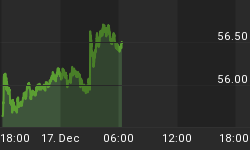The recent sell-off in equity prices illustrates how vulnerable markets are to higher interest rates. It is my contention that the catalyst for the correction had more to do with Syria and Kuwait dropping their peg to the dollar than some epiphany from investors that the U.S. has entered into a secular trend of robust G.D.P. growth; regardless, the questions of particular saliency now are: how high will rates go? Why must they go higher at all? And does the Fed really target economic growth when it raises the Fed Funds rate?
To answer these questions we'll start by asking another question: why are MZM (money of zero maturity) and M3 rising at 8% and 11%, respectively, when the monetary base has remained unchanged? The answer to that question is that of the three tools the Fed has at its disposal, the only one with any teeth is its ability to raise interest rates.
Raising reserve requirements and open market operations have limited impact on money supply since current policy dictates that only transactional deposits are subject to reserve requirements. Not only can banks borrow from the Fed to meet those requirements, but since there is no reserve requirement at all on time deposits, those funds can be loaned out an infinite number of times. This leaves the Fed with one tool for fighting excessive monetary growth: raising interest rates high enough to choke off consumer demand for borrowing.
When the Fed says it is worried about growth causing inflation, it is actually concerned with growth in the money supply causing inflation. They must be aware that real and productive growth in the economy cannot cause inflation, as there would be more goods and services to absorb any concomitant increase in monetary growth.
Due to our fiscal policies along with help from the Fed and banks, we now have an intractable and growing inflation problem. But we have seen this situation occur before and thanks to a responsible Chairman like Paul Volker, inflation was tamed with a painful -- but short-lived -- economic disruption.
Back in 1981 he was forced to raise the Fed Funds rate to 19% to soak up the superfluous liquidity. The resulting two-year recession was indeed painful as the U.S. economy suffered the most since the Great Depression. However, by 1984 the economy had turned the corner and so began secular bull market in equities and bonds. I must clearly state that I don't see inflation or interest rates rising to anywhere near the levels seen in the early ‘80s in the very near future, nor do I believe the direction for interest rates will be straight up -- especially in view of the continued housing recession, which should lead to below trend growth for the next few quarters. That being said, the scenario which could unfold in only a few more years is especially troubling.
Secular Bear Market for Bonds
As I have stated before, I believe we have entered into a multi-decade bear market for fixed income that is only beginning. Not only are rates cheap in historical terms but longer term trends in the U.S. dollar, inflation and debt should lead to an upward trend in yields. Perhaps as early as the beginning of the next decade, these fiscal and monetary imbalances will engender inflationary levels exceeding those experienced by any other generation. The Fed will be forced to follow the yield curve higher using its only real method they have for fighting inflation: higher rates. There is little doubt how the economy will fare this time while the U.S. is saddled with record amounts of debt and rates are rising.
Unlike in the early 80's,--when the U.S. was relatively unburdened by debt -- America now stands as the world's largest debtor nation. Our national debt is now approaching $9 trillion dollars and the projected debt is over $59 trillion, which includes obligations for Medicare and Social Security (Source:USA Today). Debt as a percentage of G.D.P. now stands at over 65%. Back in the halcyon days of 1981 debt stood at just 32.5% of G.D.P.
Victory at What Cost?
How high will rates go over the next decade is anyone's guess but it seems clear that today's 5.25% is not high enough to retard the rate of monetary growth. The ramifications of much higher rates on an economy with such onerous debt burdens as ours are troubling. Imagine also what the effects will be for equities as borrowing becomes too expensive for private equity deals to be consummated while earnings fall under the weight of contracting G.D.P.
Since the Fed has teamed with banks to inflate the economy and money supply, they will be forced to either let inflation rates soar or raise rates to such a level that causes a recession much worse than experienced in the early 80's. I have my doubts whether the Fed has the will to stick to its mandate of price stability, but if it does, we will all find that the cost of vanquishing inflation comes at a great expense for the economy. Then the Fed, like General Pyrrhus of Epirus after an early victory against the Romans in 280 B.C., may be forced to say "One more victory like that will destroy us completely."















